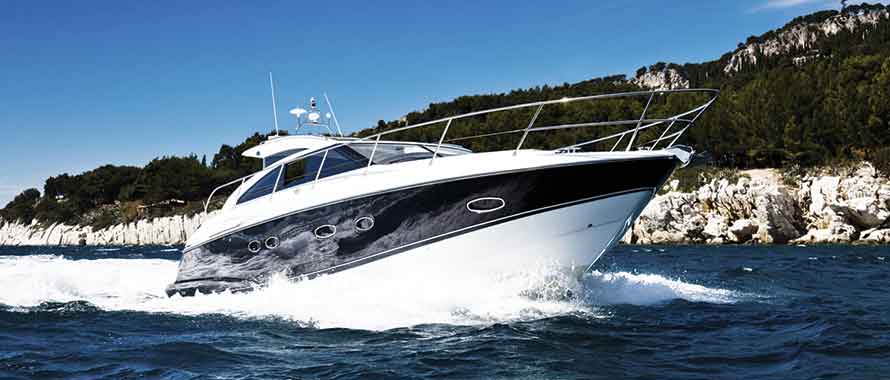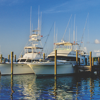The nautical know-how you need to make marine a lucrative part of your business
With spring upon us, the thoughts of many who live in America’s colder climes turn to the water, and in particular, to boating. In 2013, some 88.5 million of the 242 million adults living in the United States — about 37 percent — engaged in fishing, sailing or other recreational watercraft uses at least once, according to the National Marine Manufacturers Association’s 2013 Statistical Abstract for Recreational Boating. The organization estimates almost 16 million recreational boats were in use that year.
The marine insurance world is as vast as our network of waterways, stretching from personal watercraft, recreational boats and yachts to marinas, sightseeing and charter boats, up to cruise ships and ocean cargo vessels. It includes both hull and contents, property and liability. As the oldest type of insurance, with origins in the Middle Ages, the many facets of marine coverage make it a potentially lucrative addition to a broker’s or agent’s portfolio, especially since assistance and good markets are available to those who know where to look.
Finding a Fit
Brokers and agents often cut their marine teeth on small recreational boats. Pleasure boats up to 26 feet usually can be written in the standard market as an endorsement to a homeowner’s policy, but those policies often lack coverage for pollution, wreck removal or replacement-cost value. And an adjustor handling the loss may be more familiar with auto and homeowners than the nuances of boat claims, according to Tom Conroy, managing director — Marine, Markel.
Brokers’ and agents’ use of a homeowners endorsement for boat coverage is often short-lived. When such factors as boat size, usage or location change, a client’s boat or other marine property can quickly outgrow the underwriting box of standard insurers, observes Erin Deaton, senior underwriter with the Burns & Wilcox Marine Center of Excellence, which handles most watercraft including pleasure/recreation boats, fishing boats and “brown water” or commercial vessels.
“To get the policy you need,” she says, “you’ll need a marine-specific carrier. But these carriers work only with a specialist.”
Conroy concurs. With so many different types of boats and craft and regional differences, “it takes a high level of expertise to handle marine effectively,” he says. “One day you are dealing with a houseboat in Connecticut and the next with a high performance boat that goes 125 mph along the Pacific Coast. That’s where the specialty comes in. Erin’s team and our team often work together to understand each risk and determine what the boat owner may need.”
Burns & Wilcox helps brokers and agents place routine risks, but also frequently handles complicated marine risks, according to Deaton. Case in point: the broker whose wealthy client wanted to keep a yacht in the Bahamas, a separate fishing boat near the yacht, plus a boat on each coast of Florida and a fifth boat on a lake near his Midwest home. Deaton found good coverage across all of those jurisdictions thanks to extensive market access. This was all done behind the scenes, of course, so the clients saw their broker as a hero.
Crossing Borders
The large amount of commercial and personal marine activity flowing literally and figuratively between the U.S. and Canadian marine markets — with premiums of approximately $350 million Canadian — presents opportunities for brokers and agents on both sides of the border.
“There is huge potential for cross-border business, especially in freight forwarding,” says Patrick Barco of Burns & Wilcox Canada, previously with Avec Insurance Managers Inc. Avec, a Canadian MGA that specializes in cross-border and other marine risks, was acquired by parent company the Kaufman Financial Group, and Burns & Wilcox Canada. Avec has had particular success in placing complex coverage for freight-forwarding operations — logistics businesses usually hired by a company to pack, consolidate, transport and handle goods from point of origin to final destination.
Cross-border marine business can be a potentially lucrative addition to a broker’s or agent’s portfolio.
The London Connection
Lloyd’s is the traditional market to cover very large ocean cargo vessels, also known as blue water vessels. These can include dry cargo and container ships, offshore supply ships, crane barges, tugs, cruise ships, liquid natural gas, liquid petroleum gas vessels and oil rigs.
Despite marine’s long history, the perils of the sea haven’t really changed. What has changed is the sophistication of the ships and the values to be insured. Retail brokers and agents, ship owners and other brokers can access Lochain Patrick, a Lloyd’s broker specializing in large commercial marine placements directly.
“We offer a bespoke service to people with very high value marine risks, often owners of multiple ships or multimillion-dollar yachts, who need physical or hull damage protection for ships, liability for cargo or liability for crew,” says Andrew Hills, managing director, Lochain Patrick. “We can sort out any product that a ship owner would need.”
The risk of piracy also is back after having been dormant for a very long time. When global piracy activity increased to about 50 ships, the piracy peril was carved out and charged separately as kidnap & ransom. War risk has also risen in identifiable hot spots around the world, so every time a ship goes to one of those spots, they pay more for coverage.
Trolling for New Opportunities
Bill Gatewood, corporate vice president and director, Personal Insurance, Burns & Wilcox, is bullish about the North American personal insurance marine market, which “is starting to come back as the economy improves,” he says. “There has been an uptick in boat purchases and an increase in the values of existing boats, so we are definitely seeing an upswing.”
Deaton says the segment has shown surprising buoyancy weathering the economic downturn. “Though values temporarily dropped, boat lovers are boat lovers, and they will sacrifice other things before they part with their boats.” And though new boat sales dropped, people kept buying used boats, which still need to be insured.
Commercial shipping has been tougher in Canada, where the ripple effect of lower oil prices has reduced the amount of commercial shipping slightly, notes Barco. But the cost of insurance is still based on insured value, and there has been little change there.
From the London perspective, container ships have been particularly hard hit by the downturn in international trade over the past few years. Still, Lochain Patrick sees advantages for brokers and agents who can help ship owners save money or assume more coverage now.
Meeting existing needs in a better way is a good strategy for any broker, agent or carrier. Markel is doing just that, having just launched a program aimed at a new segment of the marine market: recreational vessels used for commercial markets. According to Conroy, the tradesman program handles boats used as rentals, as charters, as a bed and breakfast, as a boat club or as a boat school, among others, offering the sophisticated pricing and simplified underwriting platform that brokers need to make their business more seaworthy.





